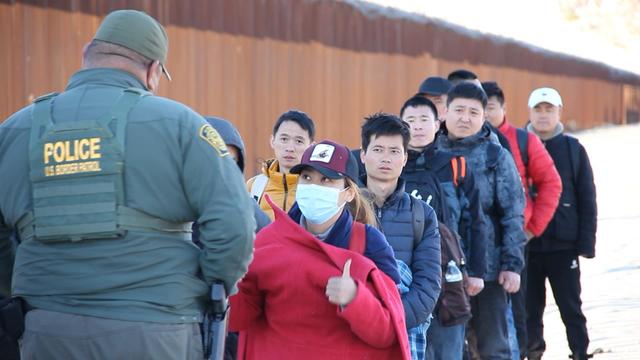Filipinos, Chinese, Indians, and other migrants risk deportation under Trump
With the tycoon’s return, hundreds of thousands of Asians risk deportation from the United States, along with Latin Americans. The Philippine government is getting ready to assist 370,000 Philippine migrants. Indians are one of the largest groups of asylum seekers, along with the Chinese. Due to a legislative void, many South Koreans adopted as infants until the 1980s are at risk.
Manila (AsiaNews/Agencies) – The Philippine Department of Migrant Workers (DMW) announced its readiness to assist 370,000 undocumented Filipinos living in the United States who might be deported following the election of Donald Trump.
The DMW is set to help returning Filipinos with financial aid and job placement, but is also considering the possibility of sending workers to other countries (in particular Croatia, Slovenia, Germany, Hungary, and Japan).
According to Rappler, a Philippine online news website, to meet its commitment to 370,000 returnees, the Philippine government would have to find 18.5 billion pesos (over 5 million) to ensure proper assistance for all.
Between 2014 and 2024, about 10,600 Filipinos were expelled from the US (a thousand per year on average), including some 3,500 during Trump's first term in office (2017-2021).
The Philippine ambassador to the United States, Jose Manuel "Babe" Romualdez, issued an advisory telling undocumented Filipinos to leave the country voluntarily.
Most Filipinos in the US are granted a regular work visa, but once it expires, many prefer to stay, often working illegally.
Irregular migrants in the United States do not come only from Latin America. The latest data (2022) indicates that about 1.7 million out of 11 million are from Asia.
More than half are from India and China, followed by the Philippines, South Korea, Vietnam, Pakistan, Nepal, Thailand, Afghanistan, and Bangladesh. In 2023-2024, 1,100 Indians were deported out of an estimated population at 725,000 unauthorised Indian immigrants in 2022.
Unlike official immigration figures, data from US courts are more up-to-date. These show that applications by Indians for asylum jumped by 855 per cent between 2021 and 2023 (mostly from Gujarat), from 4,330 to 41,330.
Last year, Indians represented the fifth-largest contingent of defensive asylum seekers after Venezuela, Cuba, Colombia, and Nicaragua. They were also the fifth-largest group to be granted asylum after Afghanistan, China, Venezuela, and El Salvador.
Defensive cases involve individuals living in the United States without appropriate papers, or caught while trying to enter the country illegally. Affirmative asylum cases are initiated by the individuals themselves.
Between the autumn 2023 and spring 2024, more than 56,000 Chinese migrants crossed into the United States. In 2022, an estimated 375,000 undocumented Chinese lived in the United States, a figure that has probably increased due to China's recent economic woes.
Between 2011 and 2022 alone, irregular Chinese immigration rose by more than 15 per cent (compared to 70.6 per cent for India) following a well-known route that takes migrants by plane from China to Ecuador and by road to the United States. In fact, some 13,000 Chinese arrived in Latin America in 2022, rising to 45,000 in 2023.
An estimate 110,000 undocumented South Koreans also lived in the United States in 2022, but their situation is completely different from that of economic migrants.
Many were adopted by US couples between the end of the Korean War in 1953 and the late 1980s, when South Korea was still ruled by a military dictatorship and adoptions took place without certifying that the children were orphans.
Amid a legislative vacuum, these children were never granted citizenship. In 2000 a law was approved that automatically naturalised children given up for adoption, but only if they were under 18 years old, which excluded many South Korean-born children.
Presently, some 20 per cent of South Korean-born adults adopted in the last 60 years face deportation, people like Adam Crapser, who was forced to leave the United States in 2016, without any knowledge of Korean language and culture, and with two American children.
The legal battle he launched against the South Korean government in 2019 should reach a conclusion next January; meanwhile, it has brought to light the plight of hundreds of adoptees whose origins have been faked or concealed.
12/02/2016 15:14
11/08/2017 20:05







.png)










